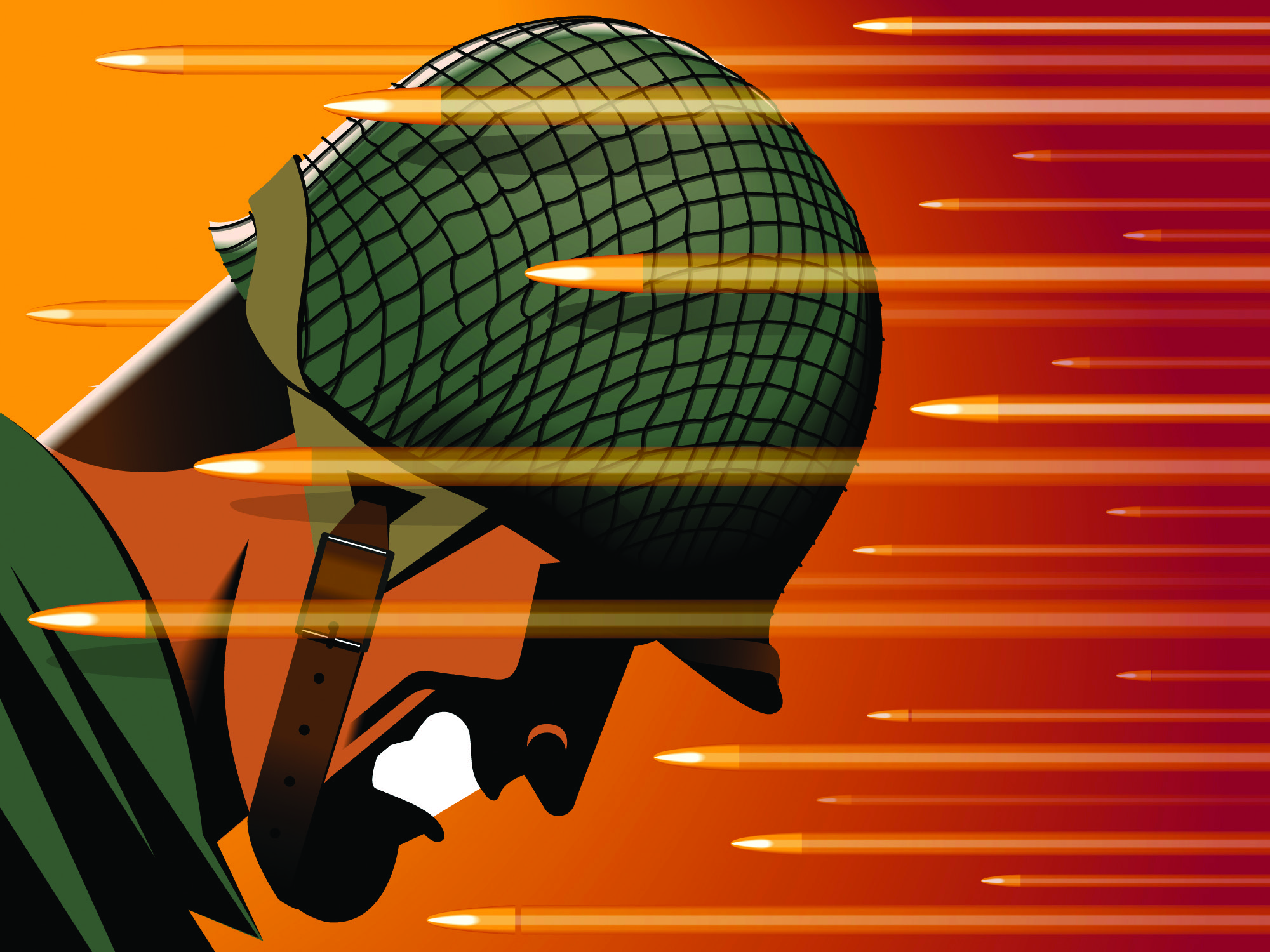An unexpected, bloody charge toward the enemy to take a key bridge at La Fière helped shape D-Day operations.
Like many military history buffs, I am an aficionado of maneuver. I love to see one side in battle surprise the other, showing up unexpectedly on a flank, or both flanks, or even bursting into the rear areas, overrunning headquarters and supply dumps and map depots. The ability to surprise, to confound, to shock: this is the art of true generalship.
The problem is, the more I study World War II, the more I see the other side of this coin. The war featured repeated moments when maneuver was impossible or ineffective, or when the overall situation called for something much more drastic.
For Exhibit A, let us wander back in time to June 6, 1944. When we recall D-Day, we usually think of amphibious landings on the coast, but that’s not what we’re looking at here. We are inland, in a tiny hamlet in the Norman countryside named La Fière. It’s not much: a handful of buildings, a manor house, a watchtower, a church.
Location is everything, however, and La Fière happens to command a key bridge over the Merderet River. Even prior to the coastal landings on D-Day, the town is the scene of fighting. The Allies have landed paratroopers in the sector, units of the U.S. 82nd Airborne Division. The nighttime drop is a mess, with men scattered all over the place. Some drop to their death directly onto German defenders; others into the flooded plain on both sides of the Merderet, where they drown.
As a result, a simple mission—to “seize and secure” the bridge at La Fière—turns into a days-long slugfest. The fighting is at close quarters and extremely bloody. After three days of fighting, the bridge is neither seized nor secure.
The little bridge is crucial to the success of Operation Overlord. Heavy American forces—the 4th Infantry Division, armor, heavy artillery, and equipment—have landed on Utah Beach, and they need to roll forward. If the Germans hold the bridge, the Americans will be penned up on Utah. The entire schedule—including the crucial drive on the big port of Cherbourg—will be thrown off. In this business, timing is everything, and wasting time almost always increases the death toll.
And that’s why 82nd Airborne’s assistant division commander, Brigadier General James M. Gavin, comes to a decision. Grabbing every man he can find from the 325th Glider Infantry and 507th Parachute Infantry Regiments, he orders them to charge across the bridge and causeway—an up-the-middle thrust into the teeth of the German defenses. No dancing, no fancy footwork. Gavin senses it’s time for action, and he knows that fancy won’t cut it.
With a great yell, U.S. troops charge the bridge. It’s mass on mass: American soldiers vs. German bullets and mortar rounds. It’s bloody, it’s raw, it’s primal. It’s the very reason they invented the word “carnage.”
It also works. Perhaps it’s the moral effect on the German defenders as they suddenly come face-to-face with the possibility that these crazy-seeming Americans will stop at nothing. German fire slackens as the defenders begin to slip away from their positions. American troops take the bridge and charge over the causeway, braving enemy fire, with Gavin right there in their midst.
The victory comes at a steep price. As Gavin later described the scene, “I looked back down the causeway. It was covered from the church to as far as I could see with bodies. I could have walked back to the bridge and never stepped on pavement.” But it’s a remarkable win, and a crucial one.
There’s a time for maneuver, sure: misdirection, double reverses, end-arounds. But as the charge at La Fière reminds us, never underestimate the power of running up the middle. —Robert M. Citino, World War II’s “Fire for Effect” columnist, is the National World War II Museum’s Samuel Zemurray Stone Senior Historian ✯
This story was originally published in the August 2019 issue of World War II magazine. Subscribe here.





